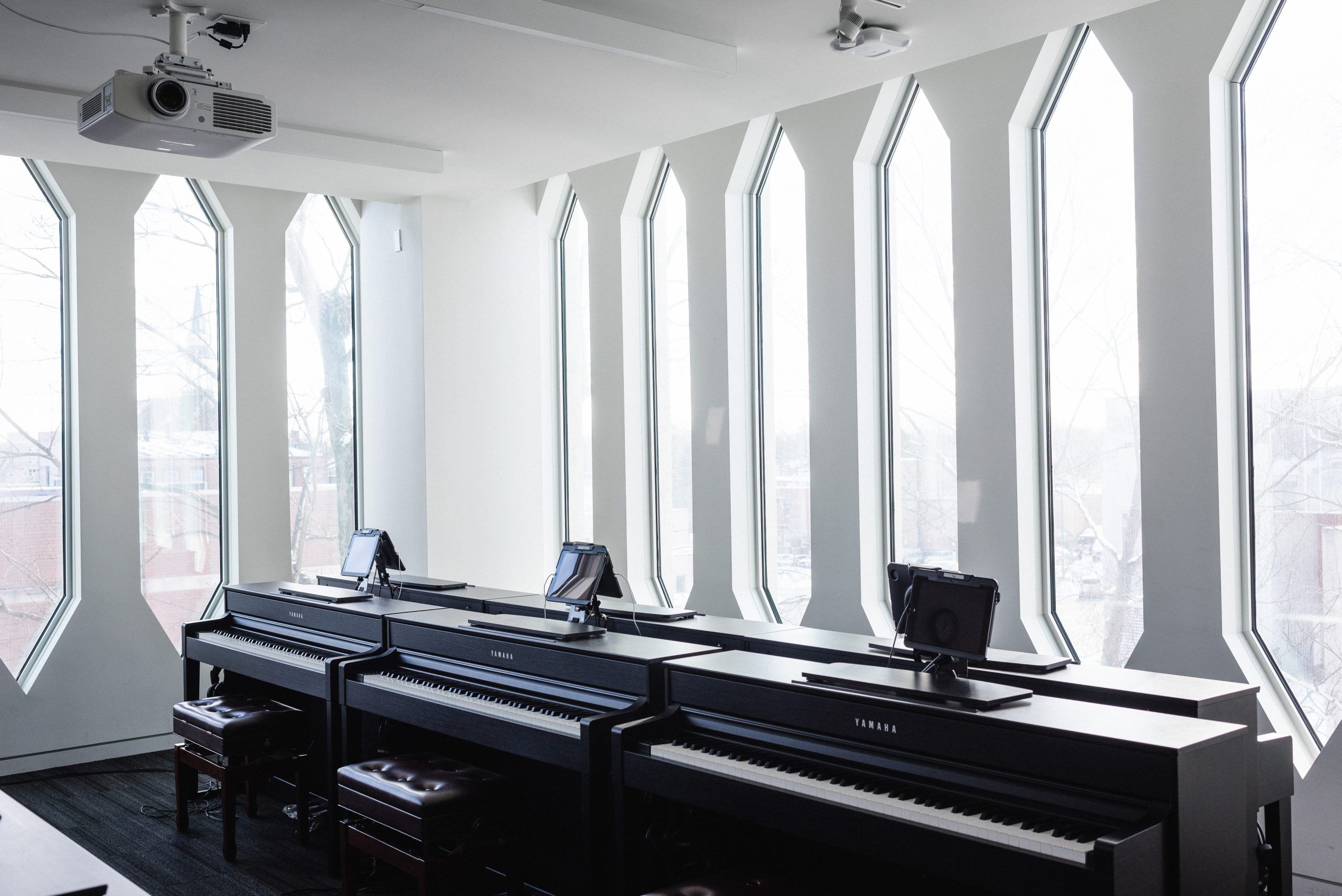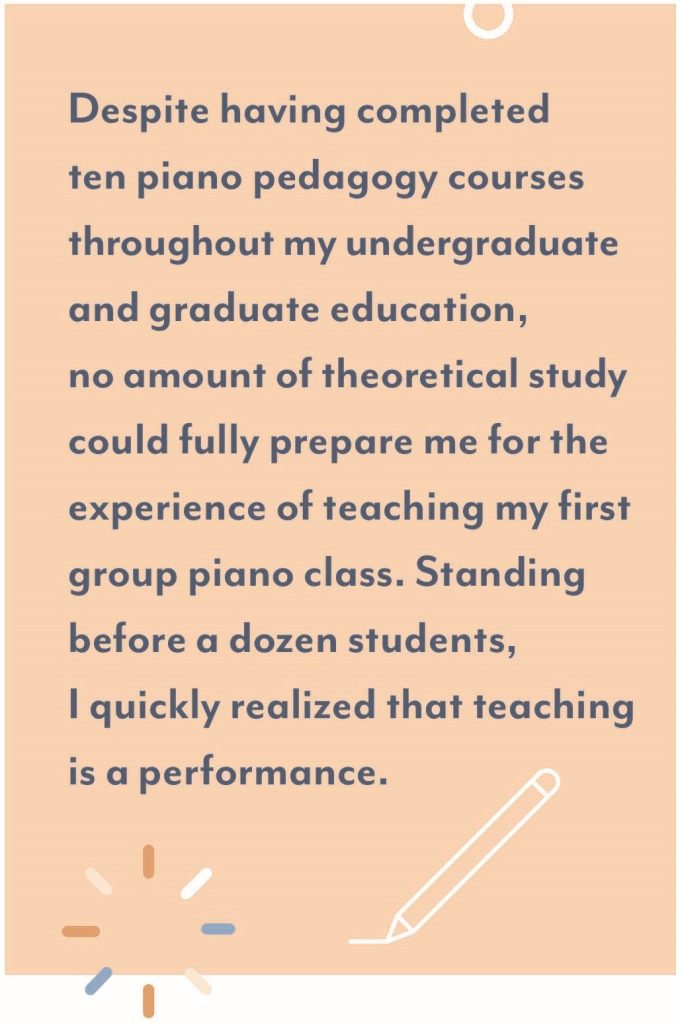We would like to thank Dominick Cristofori D’Alessandro for this insightful article on collegiate group piano and motivation. Want to learn more about motivation? Join us on Wednesday, January 24, 2024 at 11am ET for “Determinants of Motivation in World-Class Musicians and Olympic Athletes: Exploring the Front and the Back Side of the Medallion,” a webinar that highlights connections between sports and music research. Learn more and register by clicking here.

Four months ago, if someone had asked me to explain the difference between giving a piano recital and teaching a group piano class, I would have replied with a lengthy answer detailing the unpredictability of live performance versus the necessity of lesson planning. If asked that same question today, my response would be, “The amount of time you spend standing up!”
Throughout the spring 2023 semester, I held a supervised teaching role in two group piano classes at Temple University. My students were undergraduate music majors in their fourth, and final, semester of the secondary group piano curriculum. Initially, my teaching duties included a weekly sight-reading exercise, but my responsibilities gradually increased, and I began teaching the classes in their entirety by midterm. Despite having completed ten piano pedagogy courses throughout my undergraduate and graduate education, no amount of theoretical study could fully prepare me for the experience of teaching my first group piano class. Standing before a dozen students, I quickly realized that teaching is a performance.

Classroom dynamics is arguably the most complex aspect of group piano teaching. It represents all the intricate social interactions in teaching that cannot truly be learned from a textbook. Hypothetical discussions may allow pedagogy students to plan for classroom dynamics, but actual teaching is the only true way for new teachers to experience the phenomenon. Three key components of classroom dynamics that I have noticed throughout my student teaching are real-time feedback from students, the physical environment of the classroom, and the social environment of the classroom.
Real-Time Feedback from Students
During class, group piano students provide teachers a great deal of real-time feedback, which is often communicated silently through body language and facial expressions. Teachers must learn to use this valuable information to improve their lesson plans. For example, perhaps the way you initially present a new concept is met with confused looks from most of the class. First, try to explain it again but in a clearer and more deliberate manner. Successful teachers should always be ready to convey the same lesson in different ways to accommodate various learning styles. For students of different musical backgrounds, simply translating between pitch names, solfège syllables, scale degrees, or intervals can make all the difference. Second, take a moment to pause and give students time to digest and consider the information. It may be helpful to silently count for a few seconds; sense of time is significantly sped up while teaching. Third, ask the class if there are any questions. Some students tend to be reluctant to ask questions. Occasionally encouraging quiet class members to share may convince them to raise their hand. Finally, consider including an activity students particularly enjoy. Even with a busy lesson plan, spending a few extra minutes on a fun activity can greatly increase class morale. It allows students to have a gratifying experience in a course that may be challenging or viewed only as a requirement outside of their major area of study. This activity can be as simple as an online tool that randomly selects keys for a technique review. As long as it works on a skill and students find it enjoyable, it may be worth devoting extra time to it.
We hope you enjoyed this excerpt from Dominick Cristofori D’Alessandro’s article “The Unrecognized Performing Art of Group Piano Teaching.” You can read more by clicking here.
MORE ON GROUP PIANO
- MAGAZINE ARTICLE: Collegiate Essay Runner-Up: The Unrecognized Performing Art of Group Piano Teaching by Dominick Cristofori D’Alessandro
- MICROCOURSE: Teaching Collegiate Group Piano (from A Pianist’s Guide to Teaching in Groups)
- MAGAZINE ARTICLE: Tools for Group Piano Online by Alejandro Cremaschi
- MAGAZINE ARTICLE: Incorporating Metacognition into the Group Piano Curriculum by Joann Marie Kirchner
- MAGAZINE ARTICLE: Teaching Adults in Group-Piano Settings: Facilitating the Musical Process by Pamela Pike
- COURSE: A Pianist’s Guide to Teaching in Groups